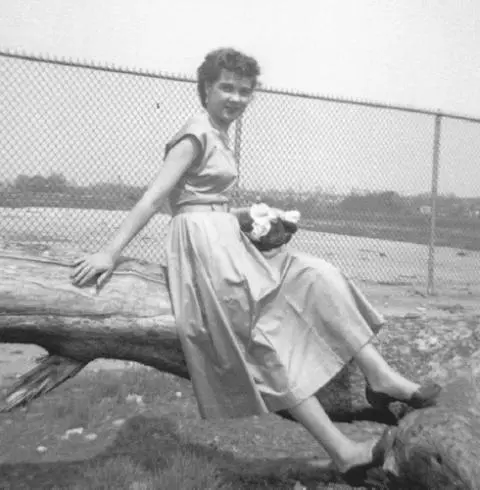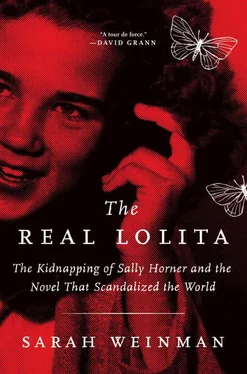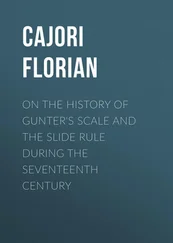IN READING LOLITA IN TEHRAN, Azar Nafisi makes the excellent point that Dolores Haze is a double victim, because not only her life is taken from her, but also her life story: “The desperate truth of Lolita ’s story is not the rape of a twelve-year-old by a dirty old man but the confiscation of one individual’s life by another .” Without realizing it, Nafisi has made the exact parallel between Dolores Haze and Sally Horner. For Sally’s life, too, was forever marked by the twenty-one months she spent as Frank La Salle’s captive, his false daughter, his own realized fantasy. After she was rescued, she attempted to resume the life snatched away from her. And it seemed she did, on the surface.
But how could she, when her story had been front-page news all across the country, and when those in Camden knew exactly what had happened to her and judged her—blamed her—for it? Whether she’d lived two years or many decades, whether she might have had time to move forward, even if she could not move on, Sally Horner was forever marked.
Lolita’s end, dying in childbirth, is a tragedy. But Sally Horner’s demise by car accident is the bigger tragedy, because it was real, and robbed her of the chance to grow up and at least attempt to move forward. In fact, Sally Horner is a triple victim: snatched from her ordinary life by Frank La Salle, only for her life to be cut short by car accident, and then strip-mined to produce the bones of Lolita, the only acknowledgment a parenthetical reference hidden in plain sight, hardly noticed by many millions of readers.
Over the course of researching this book these last few years, I would ask faithful fans of Lolita if they’d caught the parenthetical reference to Sally Horner’s kidnapping. The unanimous answer was “no.” This was no real surprise. If no one caught the reference, how could they be expected to see how much of the novel’s structure rides on what happened to Sally in real life? But once seen, it is impossible to unsee.
There is no simple lock-and-key metaphor to equate the tragic story of Dolores Haze to the tragic story of Sally Horner. Vladimir Nabokov was too shrewd to create a life-meets-art dynamic. But Sally’s story is certainly one of those important keys that, once employed, unlocks a critical inspiration. There is no question Lolita would have existed without Sally Horner because Nabokov spent over twenty years dwelling on the theme, working it out in bits and pieces as he moved around Europe and America. But the narrative was also strengthened and sharpened by the inclusion of her story.
Sally Horner can’t be cast aside so easily. She must be remembered as more than a young girl forever changed by a middle-aged man’s crime of monstrous perversion. A girl who survived adversity, manipulation, and cross-country horror, only to be denied the chance to grow up. A girl immortalized, and forever trapped, in the pages of a classic novel of satire and sadness, like a butterfly with wings damaged before ever having the chance to fly.

Sally Horner, age fifteen, summer of 1952.
The Real Lolita has a single author—me—but could not have been written or published without the input, advice, support, and sounding board of many people, in ways large and small. This odyssey began when Jordan Ginsberg, editor-in-chief at Hazlitt, replied to my March 2014 article pitch about Sally Horner’s kidnapping: “Just brought this up in our editorial meeting, and it got one of the fastest and most enthusiastic ‘yes’ votes I’ve heard in a while.” Eight months later, in great part to Jordan’s editorial vision, the piece was published and changed the course of my professional life. Much has transpired in the intervening four years, and I remain thrilled that it all began at Hazlitt . Additional thanks to senior editor Haley Cullingham, whom I have loved working with and hope to do so again soon.
Transforming Sally Horner’s story from a magazine piece to a book was equal parts challenging, exhilarating, exhausting, and rewarding. Shana Cohen offered invaluable feedback on the first rounds of book proposal drafts. My agent, David Patterson, has been a brilliant advocate and champion of this project, as has the entire team at the Stuart Krichevsky Literary Agency, particularly Aemilia Phillips, Hannah Schwartz, Ross Harris, and Stuart Krichevsky. Thanks also to my UK agent, Jane Finigan at Lutyens & Rubinstein.
My wonderful editors, Zack Wagman at Ecco and Anne Collins at Knopf Canada, pushed me to meet my ambitions for The Real Lolita and then exceed them. I am fortunate to have had such incisive and thoughtful editorial guidance from two of the very best in the business. And to Holly Harley, my editor at Weidenfeld & Nicolson in the UK, thank you for your continued support and never wavering in your enthusiasm for the project.
At Ecco, thanks to Miriam Parker, Sonya Cheuse, Meghan Deans, Megan Lynch, Denise Oswald, Dan Halpern, James Faccinto, Ashley Garland, Martin Wilson, Sara Wood (for the heart-stopping cover design), Allison Saltzman, Lisa Silverman, Andrea Molitor, and especially to Emma Janaskie. At Penguin Random House Canada, thanks to Sarah Jackson, Pamela Murray, Max Arambulo, Marion Garner, Matthew Sibiga, Sarah Smith-Eivemark, Liz Lee, Jared Bland, Robert Wheaton, and Kristin Cochrane.
Special thanks to the MacDowell Colony, for the gift of time and space to finish the first draft of the book; to Karen Riedenburg and David Dean, for invaluable research assistance; to all the archivists and institutions I visited for my research, and the sources who were generous with their time and interviews (more on them in the Notes section); and to Diana Chiemingo, who gave me her trust, faith, and belief that I could do full justice to the brief life of her aunt Sally.
Thank you to friends, family, and colleagues, a list that is by no means comprehensive: Megan Abbott, Jami Attenberg, Alice and Julian AvRutick, Louis AvRutick, Dov Berger, Liza Birkenmeier, Taffy Brodesser-Akner, Michael Cader, Steph Cha, Pamela Colloff, Julia Dahl, Hilary Davidson, Michelle Dean, Robin Dellabough, Nina Elkin, Lyndsay Faye, Dedi Felman, Charles Finch, Jordan Foster, Emily Giglierano, Juliet Grames, David Grann, Peggy Hageman, Reyhan Harmanci, Lauren Milne Henderson, Ella Hickson, Cara Hoffman, Elizabeth Howard, Janet Hutchings, Hillel Italie, Ethan Iverson, Maureen Johnson, Rokhl Kafrissen, Stephen Karam, Leslie Kauffman, Bob Kolker, Scaachi Koul, Sara Kramer, Maris Kreizman, Clair Lamb, Michelle Legro, Katia Lief, Laura Lippman, Mimi Lipson, Lisa Lutz, Michael Macrone, Jeffrey Marks, Laura Marsh, Kyla Marshell, Chantelle Osman, Helen Oyeyemi, Bud Parr, Andrea Pitzer, Bryon Quertermous, Naben Ruthnum, Alex Segura, Deb Shoval, Kathy Smith, Erin Somers, Daniel Stashower, Adam Sternbergh, Sara Stopek, Caryn Sweeney, Vu Tran, Sharon AvRutick Wallace, Joe Wallace, Robin Wasserman, Deborah Wassertzug, Dave White, Alina Wickham, and Jennifer Young.
Lastly, thank you to my brother, Jaime; the memory of my father, Jack, who I know would have been prouder than anyone that I published this book. And to my mother, Judith, forever my hero.
SELECTED WORKS BY VLADIMIR NABOKOV
Laughter in the Dark (1932; first published in English as Camera Obscura, 1936; second, revised English-language edition published in 1938; third edition published in 1963).
Despair (1934; translated into English in 1937; second English-language edition published in 1965).
Читать дальше













